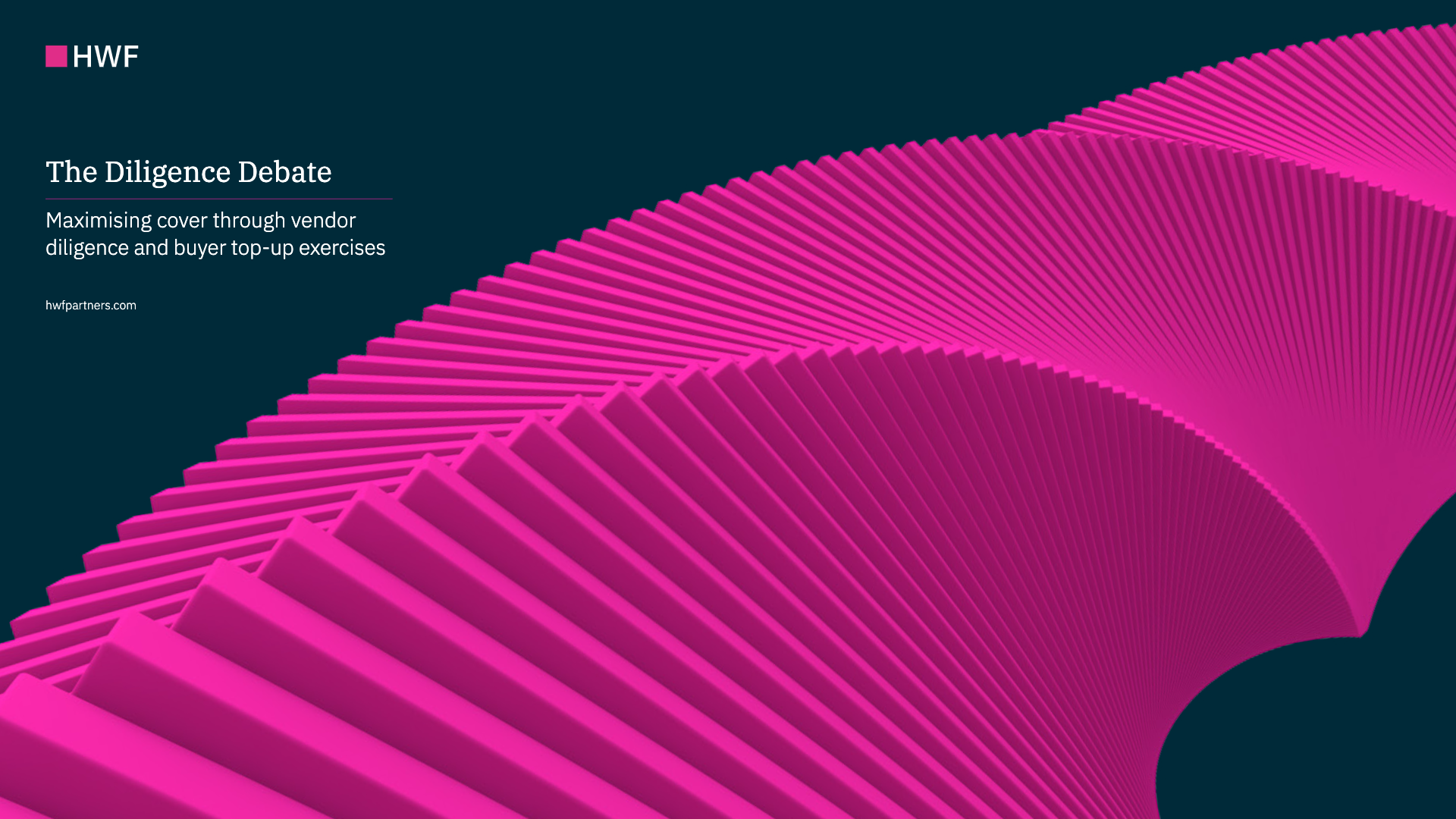The quality and depth of a vendor due diligence (“VDD”) pack will be scrutinised by insurers. In some cases where high quality VDD has been made available, we have been able to structure policies based on VDD alone (although this is an exception to the general rule that insurers will expect to see buyer top-up DD). Conversely, an over-reliance on sell-side work that is either limited in scope or purely factual as opposed to analytical, particularly on a fast-moving auction process where there is pressure to sign a deal, is likely to lead to poor coverage under a W&I policy.
How can HWF help?
1. We are able to critique VDD scopes based on our extensive experience and assess impact on any proposed insurance process.
2. We can advise on the appropriateness of a hard staple underwriting process and how to position the transaction with insurers, reducing buyer DD burden and reducing execution risk.
3. Early access to VDD will allow HWF to assess whether specific cover for known contingent issues is relevant. This would remove the risk of price chips or other consideration adjustment mechanisms, both of which sellers will want to avoid.
4. We can look to assess the value of VDD providers being engaged in the underwriting process. Reliance, if given by the advisor to the buyer, should also be used in order that the insurer’s Q&A can be raised with that advisor.
5. Where transaction timetables shift and there is a need for additional or updated reporting, we can advise who is best placed to look at the workstream from a buyer / seller perspective to maximize time and minimize cost and duplication.
Whenever VDD is produced in conjunction with a transaction, we endeavour to make sure that it is not only assessed on its merits, but also that all parties (buyers and sellers) are clear as to the value placed on it by insurers and what the expectations would be for additional DD over and above the VDD reporting.
Vendor Diligence and Top-Up Exercises
A failure to align a DD top-up exercise with the requirements of an insurer is a common cause of poor coverage under a W&I policy. Whilst misalignment between insurers and buyers has always been a challenging area, it has been exacerbated in recent times by the pressures of compressed timetables, availability (or lack thereof) of DD providers and cost sensitivities on DD. Getting visibility on whether a top-up scope aligns to the insurer’s needs and expectations will greatly improve the potential cover position.
The need for review of top-up DD exercises and extent of that review will be wholly determined by the quality of the VDD.
1. If a hard staple has not been used (and so the insurer has not already reviewed the VDD), it is imperative that the insurer’s assessment of the VDD is sought early in the process. We can assist with this and feedback initial views early in the underwriting process to allow buyers to shape their top-up exercises.
2. We will share the scopes of the buyer top-up DD with the most competitive insurers for them to assess in advance of instructing an insurer to underwrite a transaction. In our view, it can’t be the case that an insurer can tell a client when the scope is deficient, but not be able to advise when it appears sufficient (although of course we would expect them to make any such commentary subject to the underwriting process).
3. If a hard staple has been used and the insurer has provided an indication (typically a coverage note) of expected top-up areas to be covered, HWF will review the note and discuss the required top-up work with insurers in advance to gain clarity on their requirements and understand any areas of flexibility.
4. In compressed timetables we can assist in advising on DD scoping to roadmap post-signing or post-closing remediation of any material coverage gaps.
Key takeaway
VDD can be an incredibly useful tool where reports are well scoped and analysis is detailed. Early access to VDD from HWF’s perspective allows us to analyse potential issues and feed into the DD process from an insurance perspective in order to facilitate an efficient underwriting process with successful bidders, reducing execution risk and deal disruption. Buyers need to be in a position where their top up exercise will be sufficient to afford a broad cover position, having regard to the constant timing and cost pressures on buyer top-up DD exercises. HWF will
involve insurers earlier in the process, where possible, to de-risk the exercise for insureds.


